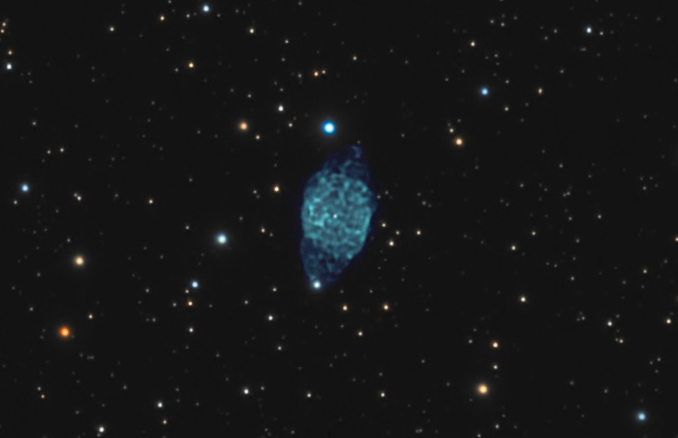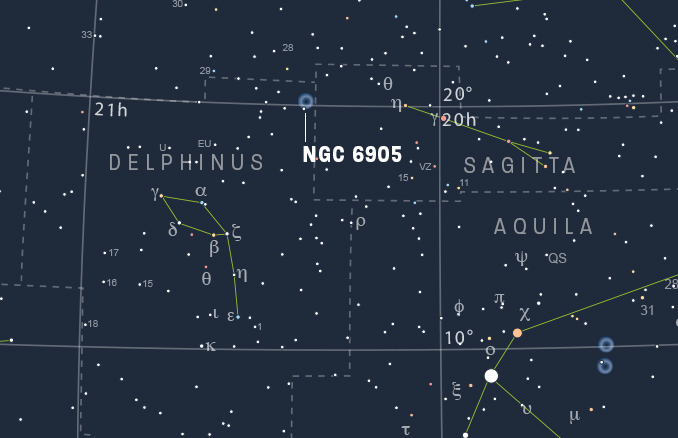
NGC 6905 is a fine planetary nebula with the colourful moniker ‘the Blue Flash Nebula’. It’s one of a large bunch of such nebulae outside of the big two, the Ring (M57) and the Dumbbell (M27), vying for prime-time attention. NGC 6905 is bright enough at magnitude +10.9 to be well seen through a moderate-aperture telescope without a narrowband filter, and is well placed for observers at mid-northern latitudes on late-summer nights, lying in the extreme north-western corner of Delphinus (the Dolphin).
How to observe
In early September, Delphinus is well up in the south-southeastern sky by nightfall. Neighbouring Sagitta’s famous ‘arrow’ asterism can be commandeered to help track down the Blue Flash. Look four degrees east of magnitude +5 eta (η) Sagittae, the star marking the arrow’s tip. You’ll be seeking a compact but irregularly shaped nebula spanning just 47 × 34 arcseconds and nestled within a triangle of ninth-magnitude stars.
Under a typical UK sky, you’ll probably need at least a 150mm (six-inch) telescope operating at a moderate magnification of, say, 100×. Try for it on a moonless night, which occurs towards the end of September. NGC 6905 culminates then at around 9.30pm BST (at around 10.30pm BST in early September) and observing it while it’s close to its highest elevation is a good idea. Once you’ve found it, try ramping up the magnification as far as conditions will allow and see how much difference an O-III filter makes.
There are conflicting reports on how vivid NGC 6905’s blue colouring actually is, but experienced observers are able to discern variations in brightness across its face.




